Previous page

In the military, they call it backwards planning. Planning out your event, your proposal, or your duties with the end result in mind. What is the desired end result of a conference? Most likely you want to see your attendees leaving with a smile on their face, a sense of determination and enthusiasm, and a guarantee that they will be back next year! Let’s start at the end of the conference, and backwards plan to make sure everything is set up and ready for action!
#10 Get Them Coming Back: Sell tickets to next year’s event during the event. You may not have all the details in place, but hopefully, you have a date and a venue. Sell discounted tickets to attendees for next years event so they walk away knowing they are coming back again next year.
#9 Departing Gifts: What are your attendees leaving with? Make sure they are leaving with something valuable and memorable. An item with your logo and the conference name would be ideal. A shirt, pen, or mug are all something that your attendees can use throughout the year, and it is continued advertising for the event.
#8 Closing Speaker: How will you close the conference? Will you have a dynamic keynote to close out the conference and get everyone fired up for next year? Will you end with a reception and dance? Leave a lasting impression, and make the last hour of your event spectacular!
#7 Dynamic Speakers: Speaking of speakers, do you have a great line up of speakers? Have you heard them speak before? Do they have solid reputations? Are they all relevant to your industry and the conference theme?
#6 Good Food and Lots of Coffee: If your event is taking place at a hotel or conference center, the food is probably being provided by the venue. If it is being catered from another establishment, make sure that you have plenty of food and that it is tasty and easy to eat. Stocking up on water, tea, and especially coffee, will ensure your attendees are well taken care of.
#5 Signs and Direction: Make it easy for your attendees to find their next session or where to go for lunch. Have signs made and start place them before attendees enter the building. Attendees want to know they are in the right place. A welcome banner with your name, logo, and the name of the conference assures people they are headed in the right direction.
#4 Decorations: Table cloths and flowers are an easy and inexpensive way to decorate a large room. Add some simple centerpieces to the tables and you are good to go.
#3 Parking/Transportation: If this is a destination conference, allow ample time for attendees to get to the event. Shuttles to and from the airport are helpful as are ample parking once attendees have arrived. Give them a list of ideas for transportation, and have someone available to answer questions as they arise.
#2 Marketing: Start your marketing early with social media, your website, and print materials around town. It is never too early to start marketing your event. Continue to market your event during and after the conference.
#1 BusyConf: Ready to plan your conference? Contact BusyConf and make it a seamless and effortless ordeal. BusyConf is a one-stop platform that allows you to collect speaker proposals, build schedules, and handle ticket registration.
Backwards planning helps you see your conference or event in a different light. It allows you to look at every step and prepare for the unexpected. Ask yourself what your ultimate take away will be and backwards plan from there.
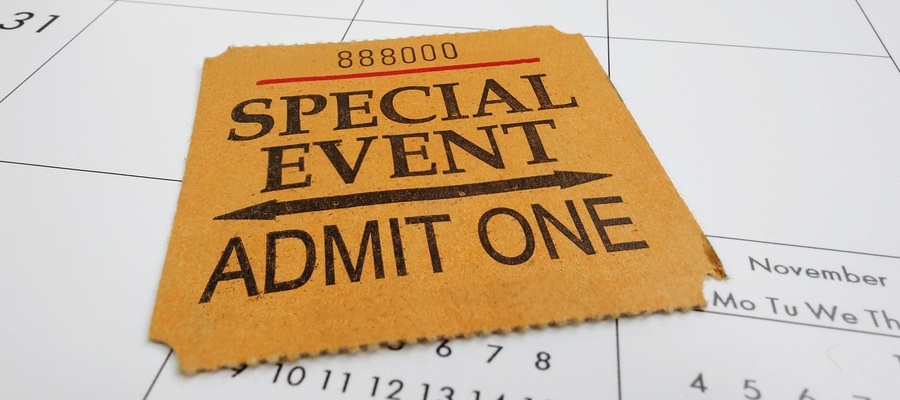
Every event planner wants to sell more tickets. Selling more tickets not only increases your revenue and helps to pay for supplies, meeting space, food, etc., but it also builds morale for the attendees and speakers. Attendees want to be at a full and busy conference. You, as a conference planner, want as many people as possible. No one wants a small crowd. How do you fill that room and increase your ticket sales? Here are a few action items that you can take:
Popular Venue: Find a venue that is well known and popular in your industry or your town. Perhaps there is a fancy hotel and conference center or a local college. Attendees like recognizable venues or exotic destinations with opporuntities for new experiences. A warehouse by the airport probably isn’t going to attract many new attendees.
Social Media: Social media is a free and easy way to promote your event. Create a Facebook business page for your event, and let people know that you are on Facebook. From your business page you can entice followers to go to your conference. It is a great platform for creating conversation and engaging with your attendees. You can also connect your website to your Facebook page and vice versus. This will create more traffic and more opportunity for people to see your event.
Press Release: Write a press release 6 months before your event and then a few more times leading up to your event. Capitalize on your amazing venue, the dynamic speakers, and all of the ways they can learn more about the event (Facebook, Twitter, your website, etc). Send it to all major news outlets. Many news channels also have free online community calendars where you can promote your event. Go to their website and see if you can add your event to their calendar.
Email Blasts: By now you should have a solid list of email addresses from your customers. Create an email blast to send out to your contact list with details of the event. Include a link to buy tickets and make it as easy as possible. You may even want to include an incentive for your contacts. For example, get two friends to purchase tickets to our event and receive 40% off your ticket! People love a discount and word of mouth is great for you!

Content marketing is ideal for promoting an event. Creating tailored
content for your event helps to build awareness and gets people talking.
Generating buzz is critical because most attendees are unlikely to
purchase tickets on the strength of an invitation alone. People are also
more likely to respond favorably to content marketing than traditional
advertising. 80% of business people prefer to get information in the
form of articles than an ad, according to a recent poll by the Content
Marketing Institute. Below you can learn some specific content marketing
tactics to promote your next event.
Guest Blogging
Guest blogging can be an effective tactic to get attention from targeted
audiences. With guest blogging, you post on popular blogs in your
industry. There are two approaches you can take with guest blogging to
promote your event. Firsty, you can ask speakers if they would like to
contribute a guest blog post and then arrange for it to appear on a related
blog. Alternatively, you can choose to create the content yourself.
Most blogs will not want to share content that is overly promotional
with their readers. This means that you can’t write a blog post about
the event itself. Instead, choose a topic that will be covered at the
event, and write a blog post centered around it. Try to choose a topic
that is likely to stir up interest or a little controversy. Bloggers
like to see comments on posts, and if it is successful, you may be asked
to write for the blog again. You can use your byline at the bottom of
the guest post to include the event details and a link to your website.
One of these easiest ways to find blogs to guest post on is use Google.
Use the following format for your Google search
[Industry] “Guest Post”
So for example, if we were promoting an event for the healthcare industry
we would enter a search for -
Healthcare “Guest Post”
This should produce a list of blogs that are already allowing guest
posts. Reach out to each of the blogs and pitch them your idea for a
guest post.
Google Hangouts
Google Hangouts are an excellent way to build buzz for an event. They
also give potential attendees an advance taste of a speakers content, so
they can decide whether it is something they want to watch at the event.
To use Google Hangouts, arrange an interview with a speaker from your event.
Invite people to attend and ask them to provide questions for the
speaker. These questions will form the basis of the interview. You can also use the video recorded from the hangout to promote your event.
Use Video Marketing
Video can attract a lot of eyeballs for your event. On YouTube alone,
more than 1 billion hours of video are consumed every single month.
Unless you already have a lot of subscribers, consider starting a
specific channel to promote your event. This will allow you to release a
series of videos which steadily builds up buzz for the event. People who
want to receive more video content, can choose to follow the channel.
You can use videos from previous events as well as post event footage.
Video content can include interviews with speakers, footage from the
event, and summaries of what is going to be covered. Don’t forget to
include a link in the video description to the landing page on your
event website.
Every time that you upload new content, you should share it through your
social networks. Share a link to your video on Twitter and make sure to
uses an appropriate hashtag so that it is easy for other people to
discover. Facebook is another great place to share video content.
Studies show that Facebook members are more likely to share, like and
comment posts which have video footage in it. You can also set up a
dedicated Facebook Fanpage for your event.
Finally, use the “YouTube Insight” function to gain a deeper
understanding of your video marketing. This tool will give you an
overview of the demographics which are viewing your video content and
where traffic is coming from. If a social network is producing better
quality traffic, you should focus your promotional efforts there.
Promoting your event with content marketing requires creativity,
networking, and a little bit of hustle. However, when it is used properly
it is one of the best ways to build awareness and improve attendance for
your event.
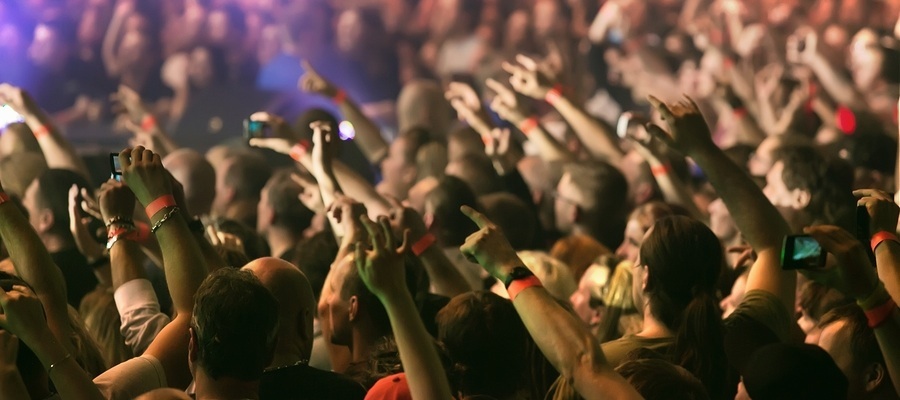
Your event may seem like a momentary thing. It comes. It goes. It’s done.
But if that were true, why invest in an event at all? According to
Forbes,
the event industry is growing faster than the economy, because every
event is an opportunity to build your brand. If you don’t shape the
legacy of your event, then you’re wasting a significant portion of your
investment.
Before Your Event
Even if you’ve never heard “building buzz” before, you’ve seen it in
action. You’ve seen how trailers tease viewers and actors appear on talk
shows before a movie comes out. If they create enough buzz, the theaters
will be packed the day the movie opens.
You have to build buzz over your event to make it a success. By tipping
off your target audience prior to your event, you can build their
excitement and engagement. Tease them with hints and clues about what to
expect. Surprise and delight them. Build their expectations. Then,
deliver something even better during your event.
During Your Event
While your event is taking place, you need to take steps to make it
memorable, appropriate, and appreciated. Whatever the purpose of your
event, you need to engage your visitors in the moment to achieve your
objectives.
Inc. offers
up some
great suggestions, some of which will work for an event of any size:
- Create an event within your event to engage directly with your
audience.
- Use social marketing to create an atmosphere of exclusivity and to
encourage participants with in-event reporting.
- Get honest, real-time feedback from event participants.
- Combine technologies to enhance your event.
Keep your marketing objectives in mind throughout your event. It’s not
enough to make it memorable–a drunken lout knocking over your displays
would be memorable. You want to leave a brand-building memory in the
minds of your event participants.
After Your Event
Once your event is over, it doesn’t have to die. Keep your event alive on
social media sites. Get participants to talk about it. If your event is
successful, they won’t need much encouragement.
Forbes says,
“The objective is to create an experience that is so engaging and
relevant that brand loyalists talk about it on social media, post
photos, and assume some of the brandwork of creating a consistent
presence.”
You want participants engaged. You want them to look forward to your
next event. You want the people who missed your event to know they
missed out. You want your event to have a lasting legacy that keeps your
business and your brand in the minds of your customers. You can do all
of that if you use your marketing creativity to shape your event’s
legacy.
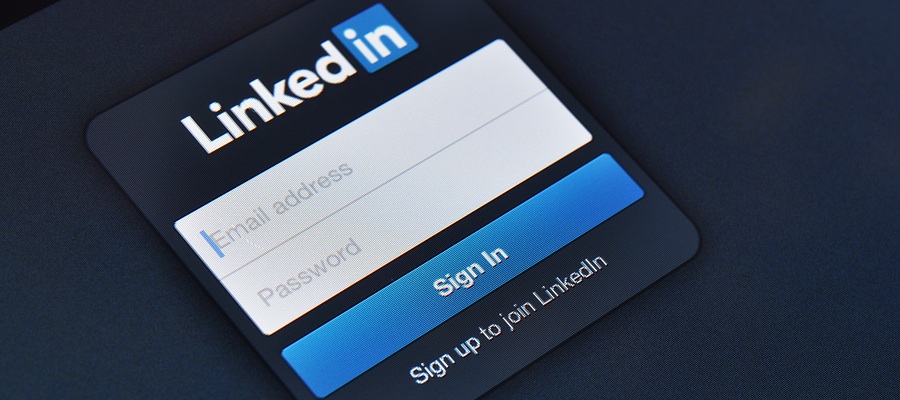
LinkedIn is one of the best places to promote your next event. This
social network has over 238 million members in 200 countries who are
looking to network and educate themselves about their industry. LinkedIn
also provides a number of tools which make promoting your event much
easier. Here you will find five tips for marketing your next event on
LinkedIn.
#1 Start with Your Company Page
Promoting your event on LinkedIn begins with you company page. When you
have an upcoming event, update your company page. This update will appear
in the news feed of LinkedIn members following your company page. To use
your company page effectively, you need to begin your promotion well in
advance of your next event. The more followers you can attract to your
company page, the wider your audience will be when you start marketing
your event.
A recent addition to LinkedIn’s serve-selflink advertising platform is the
ability to create sponsored updates. The sponsored updates allow you to
select any update on your company page and pay for it to reach a wide
audience. Because LinkedIn knows a lot of information about their users,
you can target updates using criteria such as age, location, job title,
company and gender. Using sponsored updates you can ensure that your
promotion gets in front of exactly the right audience.
It is to your speakers advantage to promote the event. Ask your event
speakers if they could promote to their own networks. LinkedIn members
are much more likely to be receptive from event promotion that comes
from the speaker than from an event company that they may not be
familiar with. Consider doing a video interview with your speaker in
order to encourage them to share content with their network.
#4 Join Relevant Groups
Look for groups that your event attendees are likely to belong to. You
can find a list of all of the LinkedIn groups at the LinkedIn Group
Directory. Keep in mind that some
groups will require you to be approved before you can join, so allow
time to be accepted by the group moderators.
Before promoting your event in the group, you want to familiarize
yourself with the type of content that people are already posting there.
You want your promotional content to be congruent with what is already
being posted. You also need to avoid being perceived as hard selling your
event. This can upset other members of the group and may even result in
you being banned.
Instead, you want to viewed as a useful contributor. A good way to do
this is to bring up an interesting topic that will be covered in the
event and encourage other group members to share their opinion. You can
then include a link in your content to a page where they can find out
more about the event.
#5 Leverage Influencers Networks
When it comes promoting an event, one of the most effective techniques is
to leverage the network of influencers in your industry. For example, if
you were promoting an event in the tech marketing space, then you might
want to reach out to influencers such as Seth Godin or Guy Kawasaki.
Whatever industry you are in there will be influencers that have massive
LinkedIn networks.
These influencers are trusted by their network who will respond
positively to recommendations that they make. Asking these influencers
to immediately promote your event is rarely effective. Instead, you want
form a relationship with them well before you start asking for favors.
Think about what you can do for them as way of introduction. For example,
you could recommend their latest book with your own network. If you
already have an existing relationship with these influencers, they will
be much more likely to respond favorably to a request to promote your
event.
In order to use LinkedIn effectively, it helps if you have plenty of
quality of content to share. Videos, blog posts, infographics and white
papers should be prepared ahead of time to assist with your event
promotion. Remember, no matter who your ideal event attendee is, they are
already on LinkedIn. Take advantage of the possibilities offered by
LinkedIn to ensure your next event is fully booked.

You just poured your heart and soul into putting on the best conference you could possibly imagine. Everything went well. The speakers showed up, the attendees enjoyed themselves, and nothing major went wrong. The buzz is finally dying down and you have some time to reflect. But now what? What can you, as a conference planner, do to prepare for next year? Unfortunately, while the conference may be over, your work is not. There are a few things that should be addressed right away.
The first thing you want to do is thank your sponsors, speakers, volunteers, and attendees for making this conference such a success. A letter with your signature would be most appropriate. If that is not possible, sending an e-mail will suffice. Be sure to thank everyone on your website, your social media platforms, and through an e-mail newsletter if you have them in your contact list. Everyone loves to be appreciated and recognized!
The next thing you want to do is make sure that everything is set for next year. By now, you have told the attendees and speakers when the event will take place and hopefully where. Confirm your venue is set and that the dates are solid, the conference rooms are booked, and get details about parking and catering. You can iron out more specific details when the time gets closer, but make sure that you are on the calendar and that everything you will need is available. The next step is to secure your speakers and make sure that the attendees have a save-the-date. It is not too early to start promoting your conference for next year. Talk about it now while people are inspired from the previous conference and eager to do it again.
It is very important to re-group and evaluate the conference. What went well? What didn’t? Get your whole team together for a daylong de-briefing of the conference. Bring in some lunch and make it fun. Review the surveys you sent out to attendees during and after the conference. Which speaker did they like the best? Which topics were most popular? What would they change if they could change one thing? Take note of this very important information and put it into practice. The conference is for the attendees. You want to make them happy, so listen to what they have to say. Fix something if it is not working and duplicate those things that are.
Finally, give yourself a pat on the back and some time to relax. Planning a conference takes a lot of work, patience, and skill. Take a couple days to enjoy the fact that it is over. Give yourself kudos for pulling off such a great event. This will give you the strength to get back into the game and start getting ready for next year’s event. It will be here before you know it!

6 Strategies to Maximize Every Conference
You’re attending a conference, and you have a million conflicting
priorities plus twice as many distractions. First of all, don’t panic.
It really doesn’t matter what you do at a conference as much as how you
follow up after you get back. Remember that fact, and it will take the
pressure off, but it also points out how important it is to manage your
time wisely. Once you get home, all you have is the data you collected.
Here are the top 6 ways to make all those conference fees pay for
themselves:
1. Get there early and map out your day.
The vast majority of attendees spend their conference waiting in line
for registration, for presentations, for lunch, etc. Be the early bird
and spend the down time preparing your game plan to hit the best
presentations and booths.
2. Leave holes in your plans.
This is the next stage of problems that many people experience after
they start preparing more carefully. They budget their time to the
minute and lose the “Aha!” moments. Schedule time for depressurizing,
for taking notes, for updating your schedule based on changes and new
information. Take a little time to expect the unexpected and seize the
moment.
3. Meet as many attendees as you can, but do it wisely.
The rule at conventions should be: accept 2x as many business cards as
you give out. This is actually a challenge because so many interactions
involve an exchange of cards. However, if there is a crowd around a
person or table of a company that interests you, take the card and come
back. They are much more likely to remember you when they aren’t
surrounded in a sea of faces. This is also a better way to manage your
time and cover more ground.
4. Pay very close attention and make it short.
Listening beats pitching every time. There will be time for your pitch
after you are better prepared. Now is the time to learn about the people
you meet because most people are not what they seem. Are they
enthusiastic about their business or scouting for a new job? Are they
thought leaders or just repeating something they have memorized? The
after conference happy hours are very often the places where business
actually gets done and whole new industries are born.
5. Jot down some notes for yourself after every interaction.
The one with the best comments wins. These will form the basis for your
follow-up emails, posts and tweets. What did you have in common? What
were they passionate about? What promises did you make? It all happens
so fast that most of what is said at the conference stays at the
conference, which ends up being a tremendous loss of potential revenue.
6. Get it in the system.
At the end of every conference day, transfer your hand-written or
voice-recorded notes into your CRM system. If you don’t have remote
access, save the data as a text file or spreadsheet that can be imported
later. There is no time to waste because the efficient competitors have
already updated their systems on the fly.
When you get back to the office, or even on the road home from the
tradeshow, start prioritizing the interactions you had. Who are the
mentors? Who are the prospects? Who are competitors who only want your
information? Don’t start the process of following up until you are clear
on your priorities. These six simple instructions will help you turn a
useless stack of business cards into solid connections of an
ever-expanding business network.
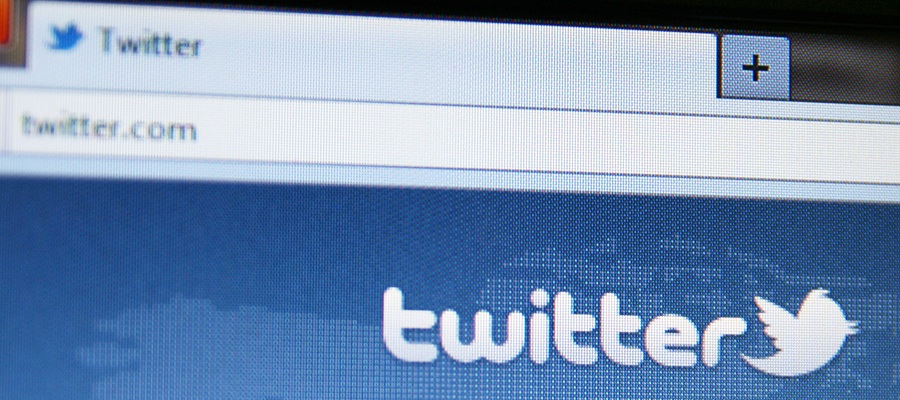
When I attend conferences, Twitter is typically my go-to platform to follow and contribute to the conversation. Twitter is real-time, and it’s quick and to the point. Here are 7 tips for conference planners on how to market using Twitter. Your presenters, vendors, and guests will appreciate the direction and exposure!
- Create a Hashtag: The very first thing you need to do is create a hashtag for the conference. It should be short and sweet. Remember, you can only use 140 characters for each tweet so you want it to be short so people can retweet and/or comment back to you. Most conferences will abbreviate their name and then add the year of the conference. For example, Social Media Success Summit 2013 is using the hashtag: #smss13. Check to be sure no one else is using this hashtag. If they are, you might want to modify it just a bit.
- Promote the Hashtag: A hashtag is no good unless people know about it. Create the hashtag early and put it on all of your printed materials, websites, and other social platforms. Encourage people to tweet using this hashtag when referencing the conference. Always use this hashtag when sending out a tweet about the conference. Remind all employees, vendors, and sponsors that they should use the hashtag when tweeting.
- Set up a Hashtag Stream: Set up an alert or a search for this hashtag so that all messages and tweets with this hashtag go to the same list. This will help you keep up with the conversation and will alert you when the hashtag is used. You can do this using several different monitoring platforms such as Sprout Social, HootSuite, or Twubs.
- Tweet Before, During, and After the Event: Tweeting before, during, and after the event keeps your conversation going and the content fresh. Remind your speakers to tell the audience to tweet if they hear something they like. Give your audience your hashtag and encourage conversation on Twitter. Don’t forget to download the Twitter app or a similar platform so you can tweet from your mobile device.
- Connect on Twitter: Before the conference, look to see if your sponsors, vendors, and speakers are on Twitter. If they are, follow them and connect with them. Send them a tweet telling them how excited you are to have them as part of the conference. This will nudge them to tweet about the conference and shows them that you are using Twitter as a key component in marketing for the conference.
- Review and Analyze: You can learn a lot about what was tweeted during the conference. Using your hashtag as a search, go back and read the tweets. Which speaker was quoted most often? Which topic stirred the most conversation? Use this information to your advantage when planning for next year’s event.
- Say Thanks: It is always nice to thank you sponsors, vendors, speakers, and attendees after the conference. You can do this through hand-written letters and/or e-mails but it is also nice to send them a tweet. Give them some recognition and make the tweet personal.
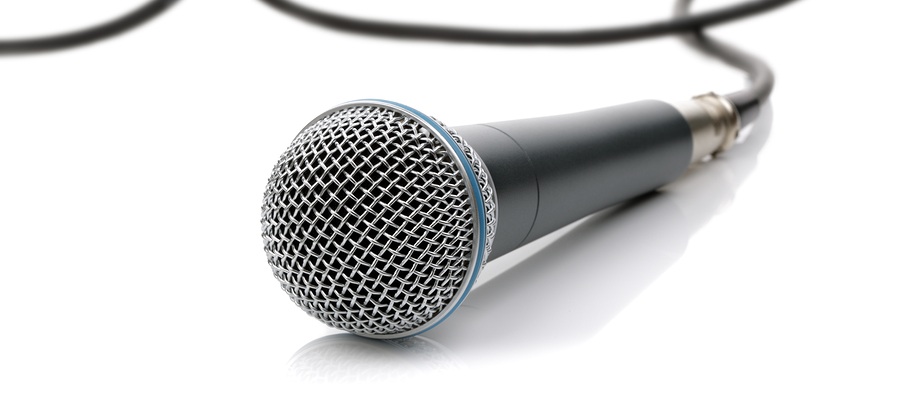
If you have been tasked with the assignment of hosting a conference you know how time consuming and cumbersome this task can be. If you have never hosted a conference, buckle up! You are about to tackle a very huge project. Here are just a few tips on what not to do at the conference:
Don’t Throw Everything Away! There are many things that can, and should be, recycled. The most important item is the plastic name tag sleeve. Those can be used again and again. Make sure that you have a place for attendees to return their name tag. You can even host a raffle for all of those who turn in their name tag and give away a prize. This will incentivize your attendees to return their badge!
Don’t Over Do It. Less is definitely more when it comes to name tags. A first and last name with their company name is usually sufficient. You don’t need to add in their state, position, and favorite type of ice cream. People are looking for a name and that is about it.
Don’t Neglect To Check the Sound System. Sound systems are notorious for glitches and mishaps. Do not go with the cheapest sound system. Do your homework and find a reasonably priced system or company. Test the sound system a couple days before the conference. Test it again a few hours before the conference. There is nothing worse than technical difficulties when you have a room full of hundreds of people.
Don’t Put Your Speakers in the Shadows. Be strategic in where you place the podium and/or speakers. Make sure that they are easily seen from the audience. Do not place the podium or your speaker behind a huge pillar or in the shadows. This will deflect from their message. People want to see who is speaking to them. Put the speakers front and center with good lighting.
Don’t Run Out of Coffee. People can get really grumpy without their morning coffee. Make sure that you have plenty of coffee in the morning and afternoon. This is one area where less is not more!
Don’t Have Messy Food. There is nothing more awkward than talking to someone you just met and trying to bite into a pastry puff that is oozing with cheese or dripping with jelly. Finger foods are great. Just make sure they are easy to eat and clean.
Don’t Forget To Announce The Next Conference. Before, after, and during this conference you will have your attendees undivided attention. Take that opportunity to tell them about the next conference or event. Allow them to sign up online while sitting in their chair.
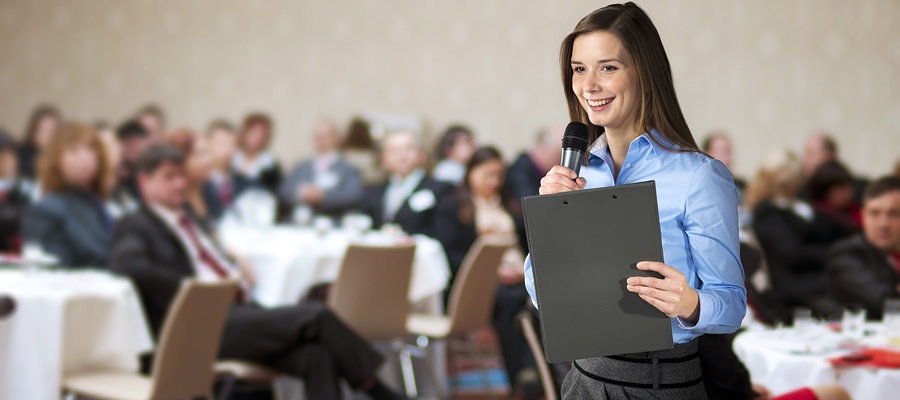
1) Trello
Trello is an innovative productivity and project management app that uses boards, lists, and cards to help get projects on track. A project on Trello is comprised of a board which can include any number of lists. Lists can represent the status of a project, such as done or doing, and cards can represent a specific task. Once a task’s status has changed, it can be moved to a different list.

Trello is useful to event planners and conference organizers because it allows you to add members to a board so you can get clients and team members on track. You can also assign people to specific cards and color code cards to better keep track of their status. The best part about Trello is that it is totally free, with a premium version available for only five dollars a month.
Trello can be a very valuable tool for professional event planners. You can create boards for specific clients and projects such as venue selection, decorations, and speakers. You can also attach files and images to cards for quick viewing. Another feature is the ability to create checklists within cards.
2) Evernote
Evernote is a great note taking tool with a desktop version, an iPhone app, and an Android app. Your notes are synced when you save so they’re always available. Evernote is useful for taking notes on venues, speakers, and anything else you need to take note of.
You can easily share these notes with other people by linking them directly to a note or by sharing an entire notebook (a group of notes) with them. Evernote’s usefulness extends beyond text as well. You can embed images, videos, tables, and other media within notes for added effect.

Twitter lists are one of Twitter’s most underused features. You can create lists for different types of people, such as journalists, attendees, or speakers, and add people to the lists relevant to them.
A public list will be viewable by the public and people will be notified when you add them to one. Private lists are only viewable to you and you can add people to them without them getting notified about it.
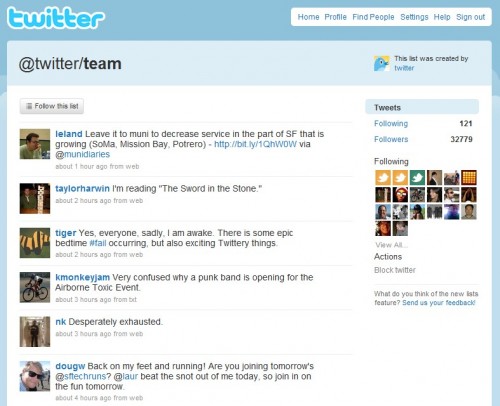
Twitter lists allow you to monitor the activity of people you care about and filter the large amount of tweets in your timeline. This is useful if you want to engage with specific people or want to have a quick list available of a specific group of people along with their contact info.
4) Pinterest
Pinterest is a popular social network that describes itself as an online pinboard. Chances are you’ve used it to share fashion photos or pictures of dream houses, but it’s also a valuable organization tool.

One innovative way to use Pinterest to organize a conference or event is to create a board for venues, designs, seating charts, or anything else that has to be decided upon when planning a conference. After adding clients or team members to the Pinterest board, they can vote on their preferences by liking or repinning their decision.
You can also use Pinterest as a template for different types of events. For example, if you know that weddings usually require certain items and conferences require other items, then you can create an event board with examples of items and services that are needed for that type of event.
Previous page
Next page
Page 5 of 9
 by
Heather Myklegard
on
by
Heather Myklegard
on














